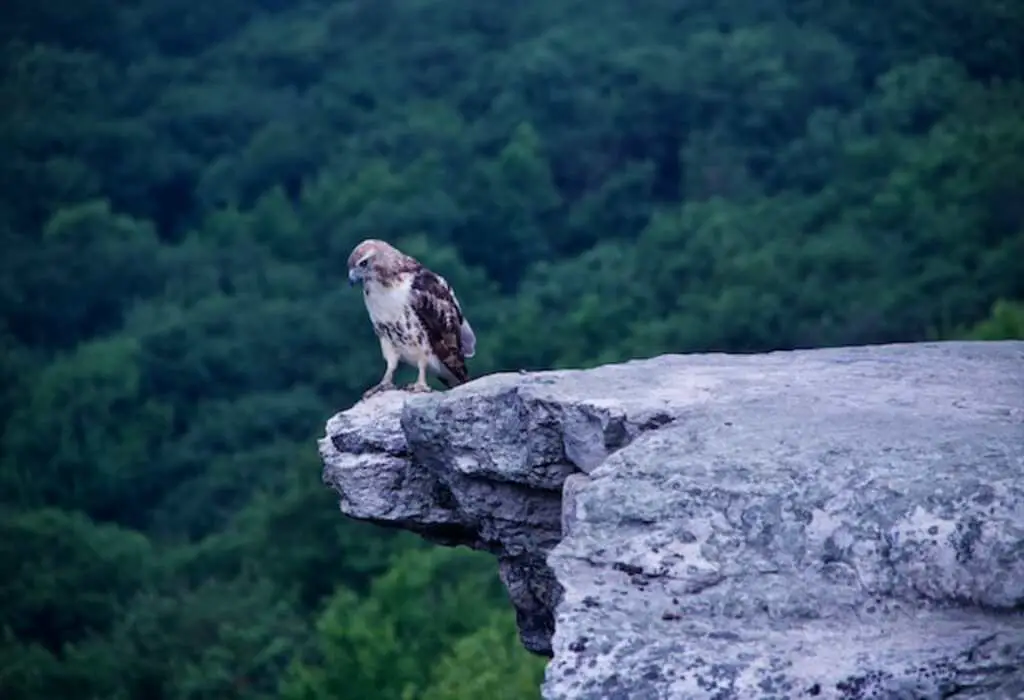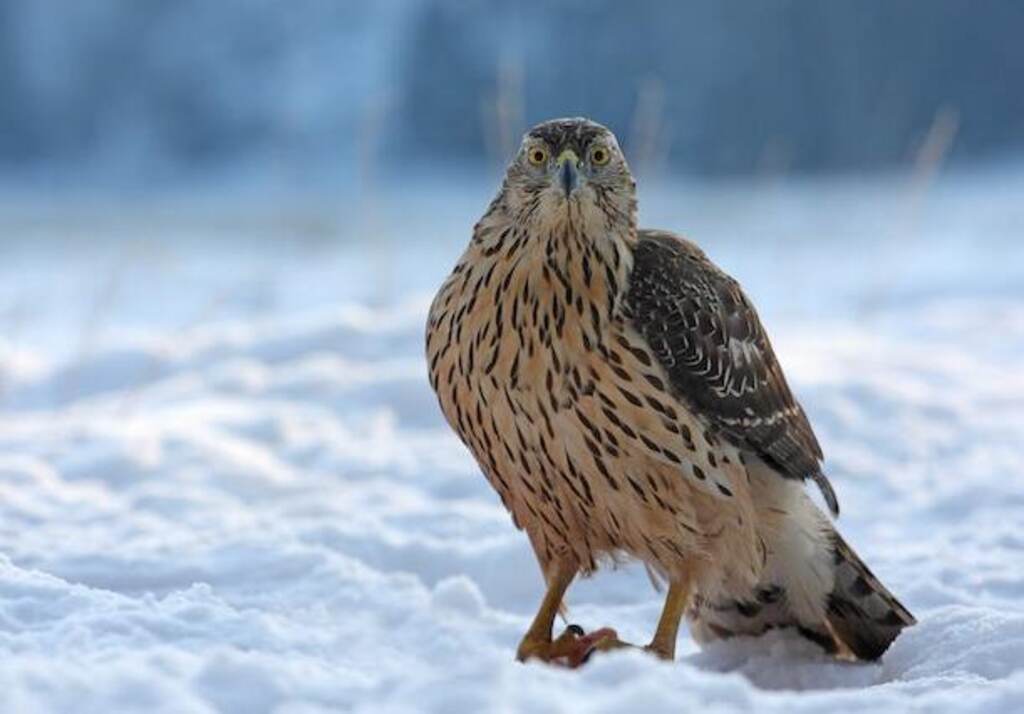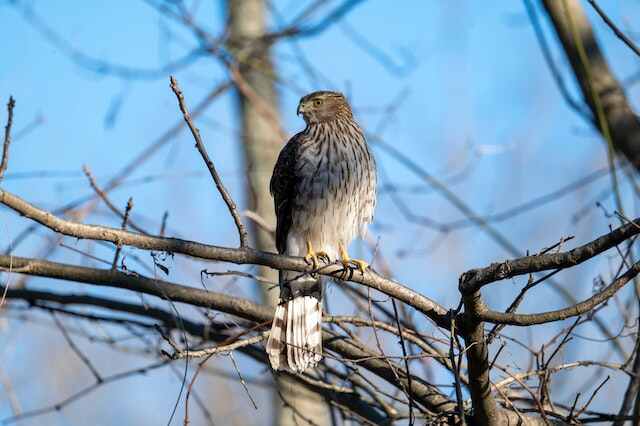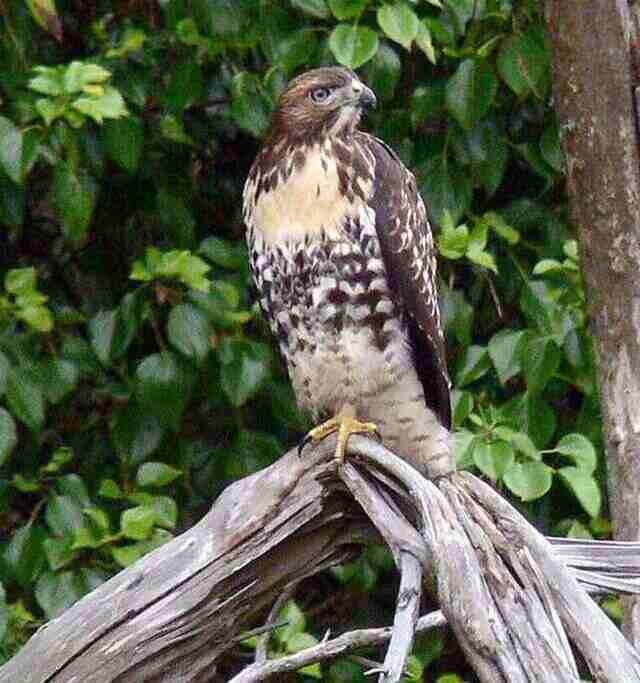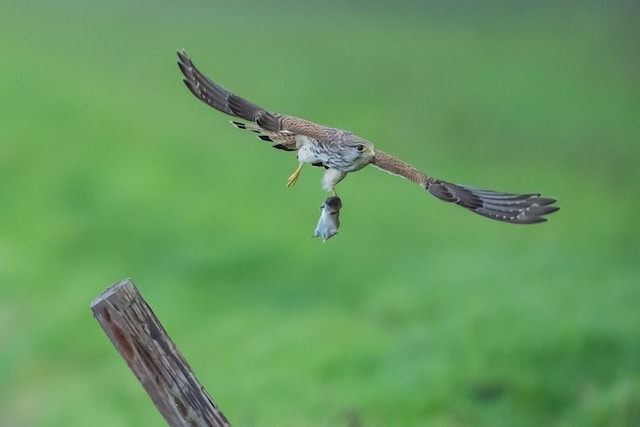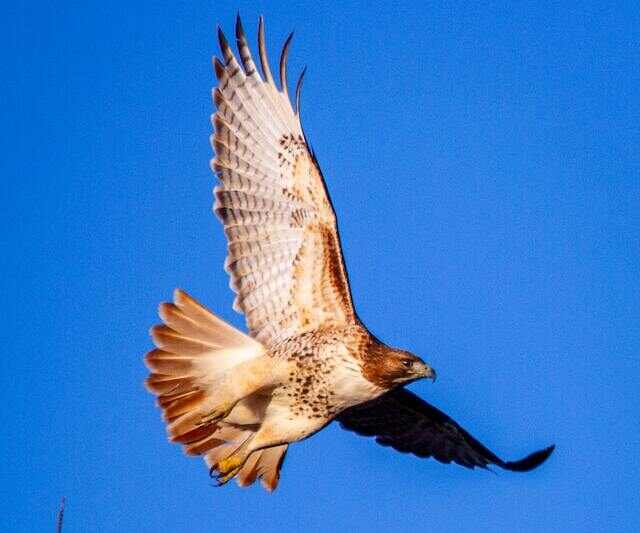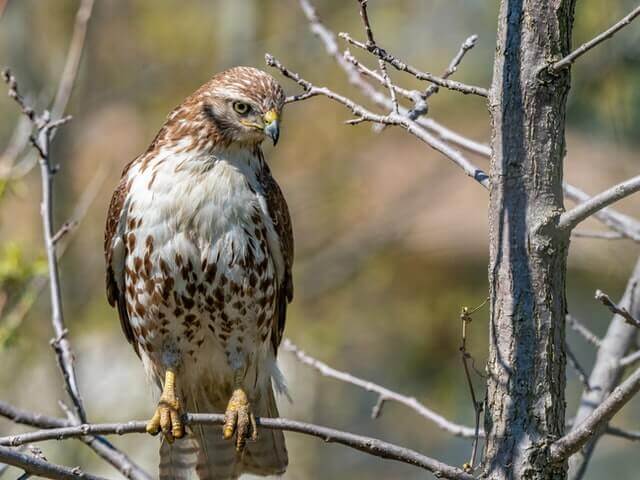Do Hawks Eat Roadkill? The burning question that has left us in awe and wonder. We’ve all seen those majestic hawks soaring through the sky, but what do they really sink their beaks into?
Brace yourselves for the short answer: yes, they do! But that’s just the beginning of this wild journey.
Join us as we uncover the surprising habits of these aerial hunters and explore the intriguing relationship between hawks and roadside meals.
Get ready for a feathered feast of knowledge!
Table of Contents
- 0.1 Explanation of Hawks and Their Hunting Habits
- 0.2 Brief Overview of Roadkill as a Food Source
- 0.3 Question: Do Hawks Eat Roadkill?
- 1 Hawks and Their Diet
- 2 Roadkill as a Food Source
- 3 Hawk Behavior Around Roadkill
- 4 Research on Hawks Eating Roadkill
- 5 Conclusion: Do Hawks Eat Roadkill?
- 6 FAQs: Do Hawks Eat Roadkill?
- 6.1 Can hawks actually spot roadkill from high in the sky?
- 6.2 Why do hawks choose to eat roadkill?
- 6.3 Do hawks prefer fresh roadkill, or do they eat any carrion?
- 6.4 How do hawks compete with other scavengers for roadkill?
- 6.5 Do hawks eat only small roadkill, or do they also go after larger animals?
- 6.6 Are there any risks associated with hawks feeding on roadkill?
- 6.7 Do hawks remove roadkill from roadways, or do they feed directly on the road?
- 6.8 Are hawks the only birds that eat roadkill?
- 6.9 Can hawks become dependent on roadkill as their primary food source?
- 6.10 Are there any measures in place to prevent hawks from being harmed by roadkill or vehicles?
- 7 Author
Explanation of Hawks and Their Hunting Habits
Before we dive into the question at hand, it’s important to understand a little more about hawks and how they hunt. There are several species of hawks found in North America, each with their own unique traits and behaviors.
Most hawks hunt from above, scanning the ground for potential prey before swooping down to catch it with their sharp talons.
Some species will also glide through the air or perch on high vantage points to spot their prey.
These birds are also known for their speed and agility in flight. They can reach speeds of up to 120 miles per hour when diving after prey, making them some of the fastest animals on earth.
Brief Overview of Roadkill as a Food Source
Roadkill is a term used to describe animals that have been hit by vehicles on roads or highways. This can include anything from deer and raccoons to smaller animals like squirrels and rabbits.
While it may seem like an unappetizing food source for humans, many wild animals will scavenge roadkill as a means of survival.
Despite its unpopularity among humans as food sources, predators such as coyotes, foxes, opossums, skunks, vultures, eagles. and yes, hawks are known to eat roadkill.
Question: Do Hawks Eat Roadkill?
Now, back to our original question – do hawks eat roadkill? The short answer is yes, they do.
While hawks typically hunt live prey, they are opportunistic and will scavenge if the opportunity presents itself. This can include roadkill or other carrion that they come across in their territory.
It’s important to note that not all hawks will eat roadkill, nor will they rely on it as a primary food source.
However, it is a potential source of nutrition that can help them survive during lean times when hunting live prey is more challenging.
In the following sections, we will explore this topic in more detail by looking at the diet of hawks and how they behave around roadkill.
We will also examine research on hawk behavior around roadkill and answer the question of whether or not hawks should be encouraged to consume it as part of their diet.
Hawks and Their Diet
Types of hawks found in North America
Hawks are birds of prey that are found all over the world. In North America, there are several species of hawks, each with their own unique characteristics and hunting habits.
Some of the most common types of hawks found in North America include: Red-tailed Hawks, Cooper’s Hawks, Sharp-shinned Hawks, and Broad-winged Hawks.
The Red-tailed Hawk is one of the largest hawks in North America and is known for its distinctive rust-colored tail.
It is commonly found in open areas such as fields and deserts, where it hunts small mammals like rabbits and ground squirrels.
Cooper’s Hawks and Sharp-shinned Hawks are smaller than Red-tailed Hawks, but are no less impressive hunters. They are known for their agility in flight and hunt primarily small birds like sparrows and finches.
Broad-winged Hawks, on the other hand, prefer to hunt from high perches like tall trees or telephone poles. They tend to hunt a wide range of prey including small mammals, reptiles, and insects.
Typical prey for hawks
As mentioned above, different species of hawks have different preferences when it comes to their diet. However, there are some commonalities among all hawk species when it comes to their typical prey.
Small mammals like rodents, rabbits, and squirrels make up a significant portion of a hawk’s diet.
Birds also make up a large portion of a hawk’s diet, with some species preferring certain types of birds over others.
For example, the American Kestrel preys mostly on insects but also eats small lizards and birds, while the Northern Goshawk preys on larger birds like grouse or ducks.
Hawks will also eat reptiles like snakes or lizards as well as amphibians like frogs. Insects like grasshoppers and beetles are also on the menu for some species of hawks.
Importance of a varied diet for hawks
Hawks, like all living creatures, require a balanced and varied diet to maintain good health. A varied diet provides hawks with the necessary nutrients, vitamins, and minerals they need to survive and reproduce.
In addition, a varied diet helps prevent diseases that can result from malnutrition or lack of certain nutrients.
For example, Hawks that feed only on one type of prey may develop a vitamin deficiency or other health problems.
A varied diet helps to maintain healthy populations of both predators (hawks) and prey (small mammals, birds etc.).
When predators focus too heavily on one type of prey, it can lead to over predation and reduced population sizes.
Roadkill as a Food Source
Definition and Causes of Roadkill
Roadkill refers to animals that have been killed by vehicles on roads or highways. The term can refer to any type of animal, but it is most commonly used for mammals, birds, and reptiles.
There are many causes of roadkill, including speeding cars, distracted drivers, and inadequate wildlife crossings. One major cause of roadkill is habitat fragmentation.
As humans continue to develop land for homes, businesses, and agriculture, natural habitats become smaller and more fragmented.
This forces animals to cross roads in search of food or mates, which puts them at risk of being hit by cars.
Another cause of roadkill is the behavior of wildlife itself. Some animals are attracted to the warmth and light emitted by roads at night.
For example, turtles may lay their eggs on the side of a road because it is warmer than surrounding areas. This puts them at risk when they later cross the road in search of food or water.
Nutritional Value of Roadkill
Despite its gruesome origins, roadkill can provide a valuable source of nutrition for scavengers like hawks. Animals that have been dead for only a short time may still be fresh enough to eat without risking disease or spoilage.
The specific nutritional value of roadkill depends on the type and condition of the animal.
However, most roadkill provides a high amount protein and fat relative to its weight. This can be especially important for hawks during times when prey is scarce.
Hawks are opportunistic hunters that will eat almost anything they come across if they are hungry enough.
While they prefer live prey like rodents or birds, they will not pass up an easy meal if one presents itself.
Risks Associated with Consuming Roadkill
While roadkill can provide an important source of nutrition for hawks, there are also risks associated with consuming it.
For one thing, animals that have been dead for a long time may be contaminated with bacteria or other pathogens that can make the hawk sick. Another risk is competition with other scavengers.
If a hawk comes across a fresh roadkill, it may have to compete with other birds like vultures or crows for the food.
This can be especially challenging if there are many other scavengers in the area that also rely on roadkill as a food source.
Hawks may be at risk of injury or death themselves when feeding on roadkill. If they are not careful, they could be hit by passing cars or attacked by larger predators like coyotes or foxes.
While roadkill can provide an important source of nutrition for hawks and other scavengers, there are also risks associated with consuming it.
Hawks must weigh these risks against the potential benefits of finding an easy meal in order to survive in their environment.
Hawk Behavior Around Roadkill
Attraction to Carrion: A Hawk’s Sense of Smell and Sight
Hawks are known for their sharp vision and hunting skills, but they also have an acute sense of smell that enables them to locate carrion from a distance.
When searching for food, hawks will use both their eyesight and sense of smell to find potential prey.
However, when it comes to roadkill, a hawk’s sense of smell is particularly helpful in locating the source of the odor.
Once a hawk has found a carcass, it may perch nearby to observe the area for any signs of danger or competition.
If there are no other scavengers present, the hawk will begin feeding on the roadkill. However, if other predators or scavengers are around, the hawk may engage in competition or attempt to scare them away.
Competition with Other Scavengers: Fighting for Food
Hawks are not the only birds that scavenge for food. Ravens, crows, vultures, and magpies are also common scavengers that can be found around roadkill.
When these birds encounter each other over a carcass, they may engage in aggressive behavior such as chasing each other off or even physical contact.
In some cases, hawks will tolerate other scavengers feeding on roadkill as long as they do not interfere with their own feeding process.
However, if competition becomes too intense or if there is not enough food available to go around, hawks may become aggressive towards other birds.
Potential Dangers to the Hawk: Risks Involved in Feeding on Roadkill
While roadkill provides an easy source of food for hawks and other scavengers alike, there are several risks associated with consuming carrion.
One significant concern is disease transmission from contaminated meat. Roadkill may contain harmful bacteria or viruses that can make a hawk sick.
In addition to disease, roadkill may also be contaminated with chemicals such as pesticides or heavy metals.
These toxins can accumulate in the hawk’s body over time, leading to long-term health problems or even death.
Feeding on roadkill near a busy road can put hawks at risk of being struck by passing vehicles. These accidents are not uncommon and can result in serious injuries or death for the bird.
Research on Hawks Eating Roadkill
Studies on Hawk Behavior Around Roadkill
Studies have shown that hawks are attracted to roadkill, particularly during the winter months, when other food sources may be scarce.
In a study conducted by the University of Wyoming, researchers observed a significant increase in the number of hawks in areas where roadkill was present.
The study also found that different species of hawks had varying degrees of attraction to roadkill, with some species being more likely to feed on carrion than others.
Another study conducted by the University of California found that hawks were not only attracted to larger roadkill such as deer and raccoons, but also smaller animals like squirrels and birds.
The researchers concluded that hawks are opportunistic feeders and will take advantage of any available food source, including roadkill.
Observations from Birdwatchers and Ornithologists
Birdwatchers and ornithologists have also reported observing hawk behavior around roadkill.
A common observation is that when a hawk is feeding on carrion, it may become territorial and aggressive towards other scavengers attempting to access the same food source.
This behavior is more commonly seen in larger species of hawks, such as red-tailed and Cooper’s Hawks.
In addition to territorial behavior, birdwatchers have also observed hawks using roadkill as a perch or lookout point while they scan their surroundings for potential prey.
This behavior allows them to conserve energy while still maintaining an advantageous position for hunting.
Examples from Real-Life Situations
There have been several real-life situations where hawks have been documented feeding on roadkill.
One notable example occurred in New York City’s Central Park, where birdwatchers observed a Red-tailed Hawk feeding on a dead squirrel that had been struck by a vehicle.
Another example comes from rural Montana, where a group of birdwatchers observed a Swainson’s Hawk feeding on a dead jackrabbit on the side of the road.
The hawk was observed tearing off pieces of flesh and consuming them, indicating that it was using the roadkill as a food source.
Overall, research and observations indicate that hawks are indeed attracted to roadkill as a potential food source.
While this behavior is not harmful in itself, it does highlight the importance of proper disposal of roadkill to prevent attracting scavengers to dangerous areas near roads.
Conclusion: Do Hawks Eat Roadkill?
After exploring the topic of hawks and their potential consumption of roadkill, it is clear that these birds of prey are not adverse to scavenging for food.
While hawks do typically prefer live prey, they may resort to feeding on carrion in certain circumstances. This behavior can have both positive and negative implications for wildlife conservation.
Throughout this article, we have discussed the various types of hawks found in North America, their typical prey, and the importance of a varied diet.
We have also explored the concept of roadkill as a potential food source for these birds, including its nutritional value and associated risks.
Additionally, we delved into hawk behavior around roadkill, including their attraction to carrion and competition with other scavengers. So, do hawks eat roadkill?
The answer is yes – although it is not a common occurrence and largely depends on the individual hawk’s circumstances and available options.
While some may view scavenging as less noble or efficient than hunting live prey, it is important to remember that animals must adapt to changing environments in order to survive.
In situations where live prey is scarce or inaccessible, consuming carrion may be a necessary survival strategy.
In terms of wildlife conservation implications, there are both positive and negative aspects to consider when it comes to hawk consumption of roadkill.
On one hand, this behavior can help prevent waste by utilizing resources that would otherwise go unused.
On the other hand, if large numbers of hawks begin regularly feeding on roadside carcasses near busy roads or highways, this could potentially increase their risk of being hit by cars or coming into contact with harmful toxins from pollution.
Overall, while it may be surprising to learn that hawks will occasionally consume roadkill as a food source, it is important to remember that nature is full of surprises and adaptations.
Understanding these behaviors can help us better appreciate and protect these magnificent birds of prey for future generations.
FAQs: Do Hawks Eat Roadkill?
Can hawks actually spot roadkill from high in the sky?
Yes, hawks have exceptional eyesight, allowing them to spot even the tiniest details from great heights. Their keen vision helps them locate roadkill as they glide effortlessly through the air.
Why do hawks choose to eat roadkill?
Roadkill offers hawks a readily available source of food. It’s an easy meal option that requires less effort compared to hunting live prey, making it a convenient and efficient choice for these skilled hunters.
Do hawks prefer fresh roadkill, or do they eat any carrion?
While hawks typically prefer fresh roadkill, they are opportunistic eaters and will consume carrion at various stages of decomposition. They have adaptations that allow them to safely consume decaying meat without negative effects.
How do hawks compete with other scavengers for roadkill?
Hawks have powerful talons and beaks that give them an advantage over smaller scavengers. Their aerial agility and territorial behavior also help them secure their share of roadkill, often intimidating other scavengers and asserting their dominance.
Do hawks eat only small roadkill, or do they also go after larger animals?
Hawks are known to target a range of prey sizes, including small mammals and birds. However, larger roadkill, such as rabbits or squirrels, can still attract hawks, especially if it’s easily accessible and provides a substantial meal.
Are there any risks associated with hawks feeding on roadkill?
While roadkill can provide a convenient food source, it may pose risks such as exposure to toxins or diseases. However, hawks have evolved digestive systems that can handle a certain degree of contamination, minimizing potential harm.
Do hawks remove roadkill from roadways, or do they feed directly on the road?
Hawks may sometimes consume roadkill directly from the road. However, they are also known to carry their finds to nearby perches or secluded locations where they can consume their meal in peace, away from potential traffic dangers.
Are hawks the only birds that eat roadkill?
No, hawks are not the only birds that scavenge on roadkill. Other raptors, such as vultures and eagles, as well as some corvid species like crows and ravens, also take advantage of this readily available food source.
Can hawks become dependent on roadkill as their primary food source?
While hawks do opportunistically feed on roadkill, they have a diverse diet that includes live prey. Roadkill serves as a supplemental food source rather than their sole reliance, allowing them to adapt to different food availability situations.
Are there any measures in place to prevent hawks from being harmed by roadkill or vehicles?
Roadkill is an unfortunate consequence of human activity, and there aren’t specific measures to protect hawks from this particular hazard. However, efforts to minimize roadkill incidents, such as wildlife crossings or roadkill cleanup programs, indirectly benefit hawks and other wildlife by reducing potential risks.


